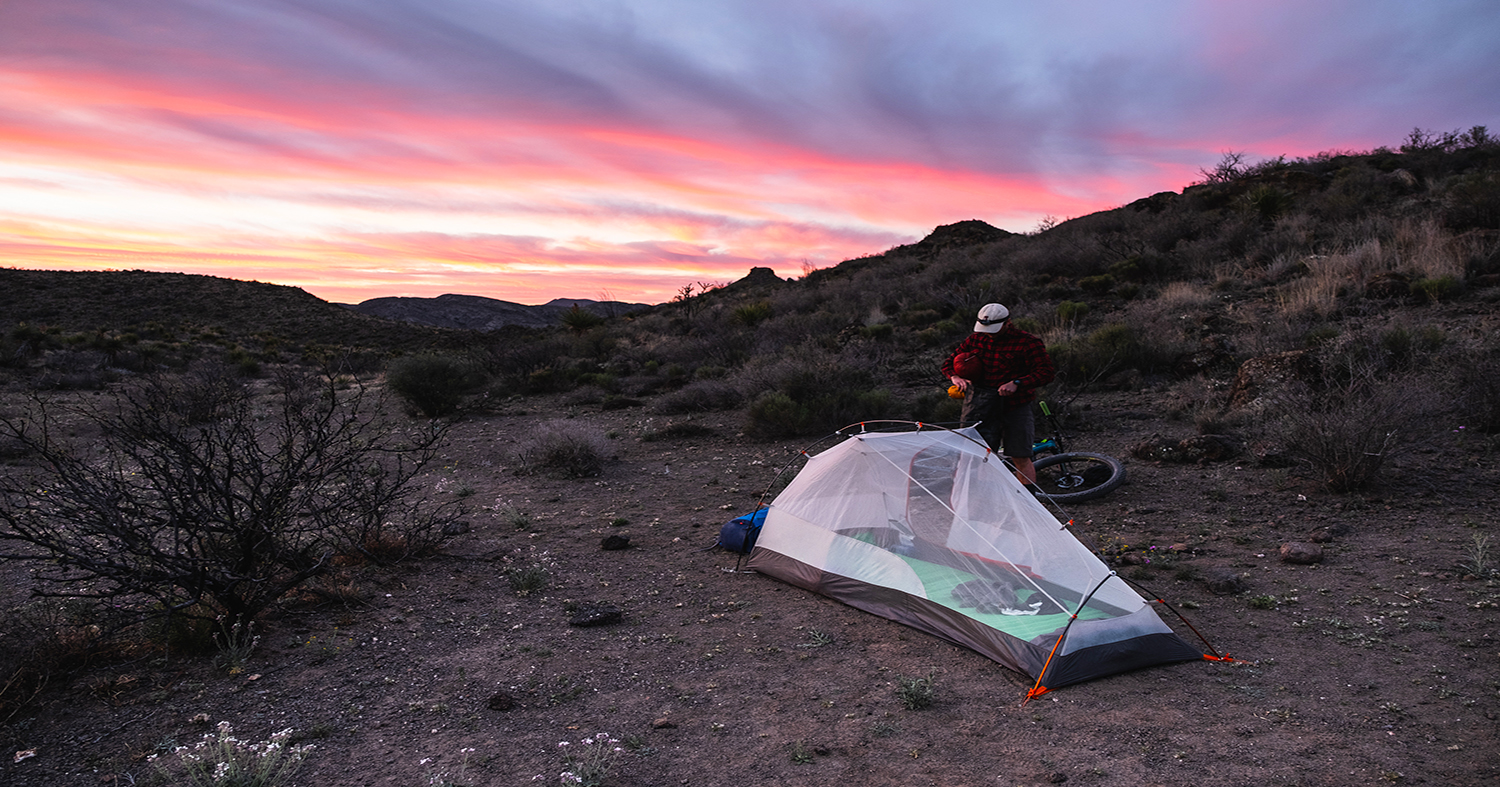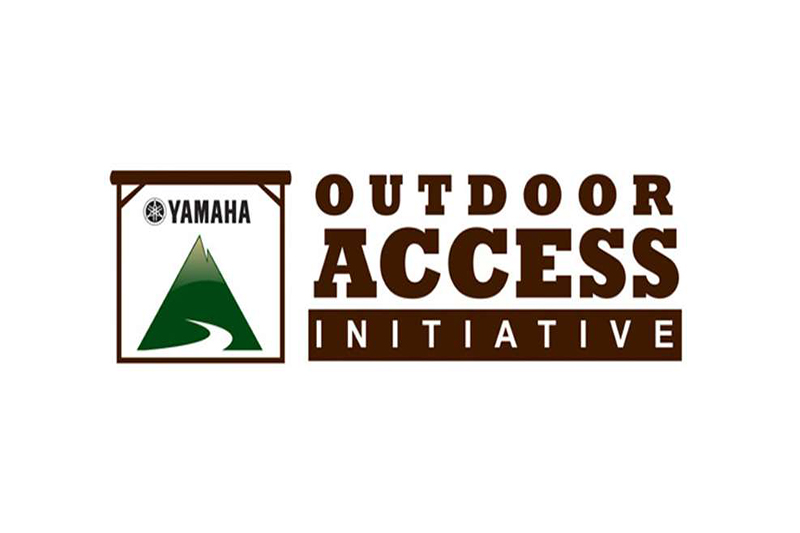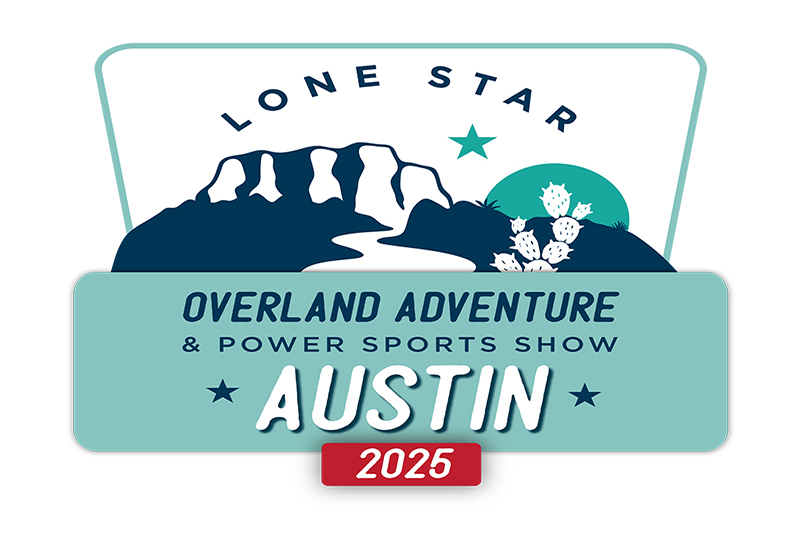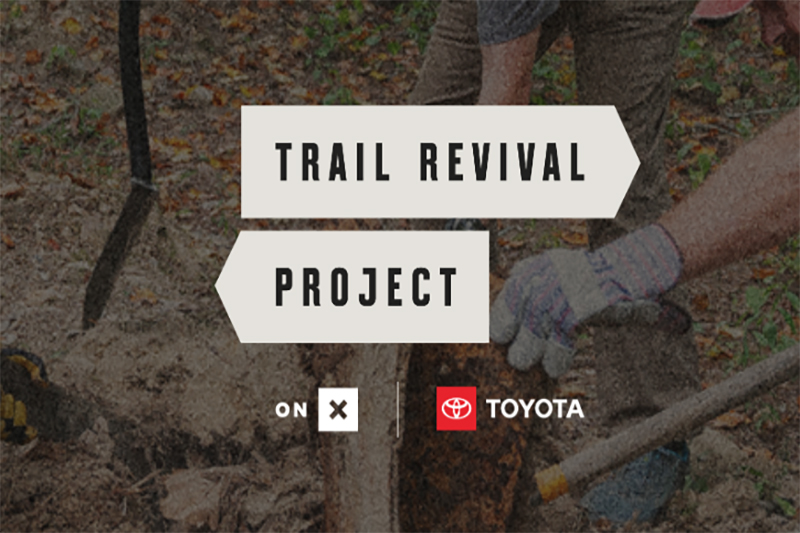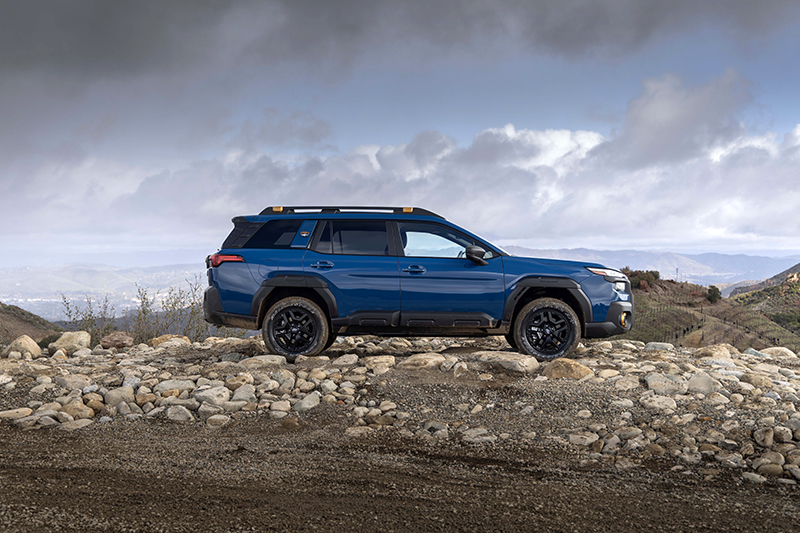Adventure Media, conservation photography, and engaging the next generation of adventure storytellers
Jerod Foster is a Texas-based conservation and outdoor adventure photographer, as well as an associate professor of practice and assistant dean in the College of Media & Communication at Texas Tech University. At Texas Tech, Jerod’s primary responsibilities involve teaching industry-based visual storytelling courses, including the popular Adventure Media program that introduces students to commercial and journalistic forms of outdoor recreation and adventure storytelling through a week-long backcountry bikepacking expedition. Jerod uses his own experiences in the field to inform the development of and instruction in this course, as well as other experiential programs at the university.
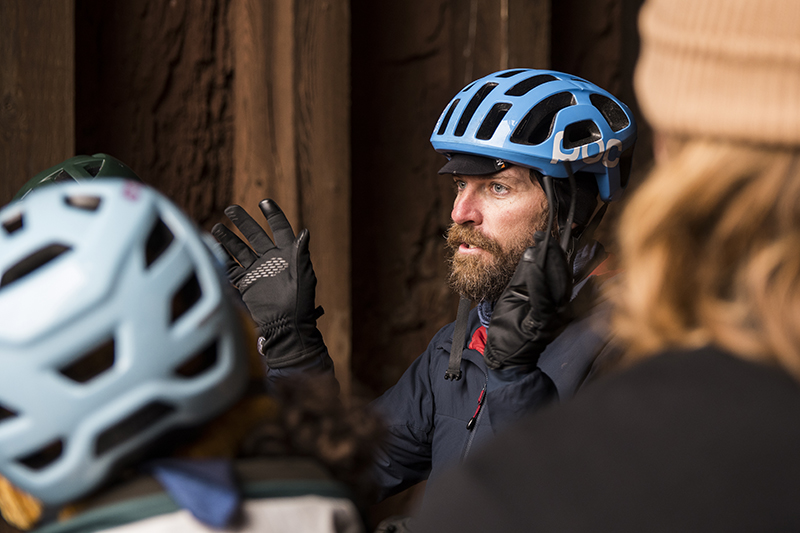
Photo by Justin Rex
OX4: Tell us about where you’re from and how you became interested in journalism and adventure media.
JF: I grew up on a cattle ranch in a rural north central Texas town named Cottondale, which is about 25 miles northwest of Fort Worth. Like any ranch kid, I grew up mostly outside hiking, biking, and motorcycling around the ranch, so a strong sense of the outdoors was instilled pretty early on in my life. My cousins and I spent a great deal of time fishing the ranch’s lakes during the summer and helping our grandfather and uncle work cattle and goats, bale hay, and harvest melons. I was a curious kid (still am), and I loved exploring the ranch’s creeks and hillsides and would even keep a journal of what I saw/discovered on my outings, as well as made photographs with a disposable camera.
When I came to Texas Tech University, I majored in Agricultural Communications, and it was there that I discovered my love for storytelling, particularly that which involved photography. I saw a direct connection to what I was doing creatively as a kid exploring the ranch and how that translated into industry. During this time, I also met—and subsequently took a photography class from—the State Photographer of Texas, Wyman Meinzer. His 15-day field course solidified it for me, and I bypassed law school for an opportunity to work on my master’s, start my professional photography career, and work with Wyman and his wife Sylinda in the book publishing business.
My upbringing and Wyman’s formative influence pushed me further into journalistic and editorial work in the outdoor and nature conservation fields, and my photography career has predominantly revolved around those themes. Additionally, I am a passionate mountain biker and gravel cyclist, and over the past few years have been merging my photography work with backcountry and byway exploration from atop a bike.
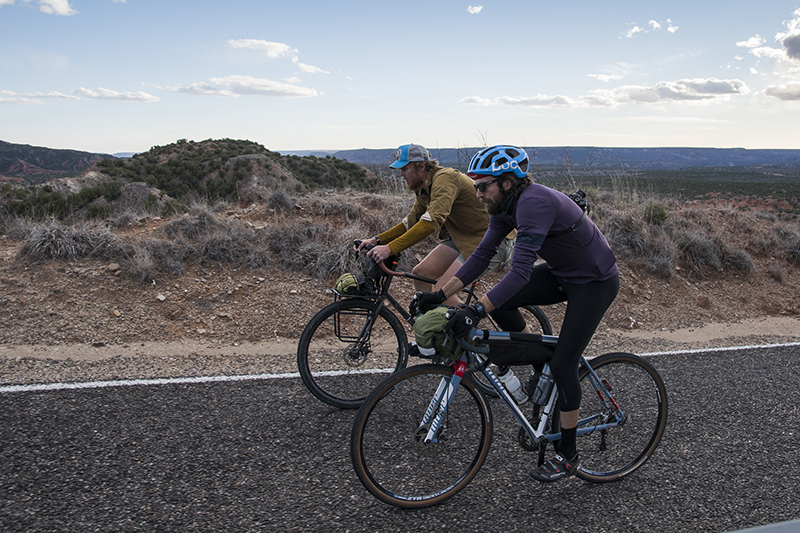
Photo by Justin Rex
OX4: What is Adventure Media?
JF: Adventure Media is a class I teach in Texas Tech’s College of Media & Communication that exposes students interested in learning more about and/or working in the outdoor recreation and adventure media markets. I created the class several years ago as a typical semester-long class that incorporated a few production field trips to nearby state parks. Since then, the class has morphed into a completely field-based course that revolves around a Spring Break bikepacking expedition with 15 students in the backcountry. I now have a teaching partner in it, and together, we manage providing students with what is for many of them an intense, first-time outdoor experience. We connect relevant external organizations with the students through course work and facilitate a very real-world work experience for them in which they are producing content for editorial, commercial and non-profit purposes. We have partnered with organizations such as Oveja Negra Bikepacking, Bikepacking Roots, Planet Forward, Tailwind Nutrition, and others ranging from the local retail level to international editorial outlets. These partnerships help establish authentic professional expectations for the students while the expedition itself plays a vital role in helping students gain new experiences, learn more about themselves and their capabilities, and feel accomplished!
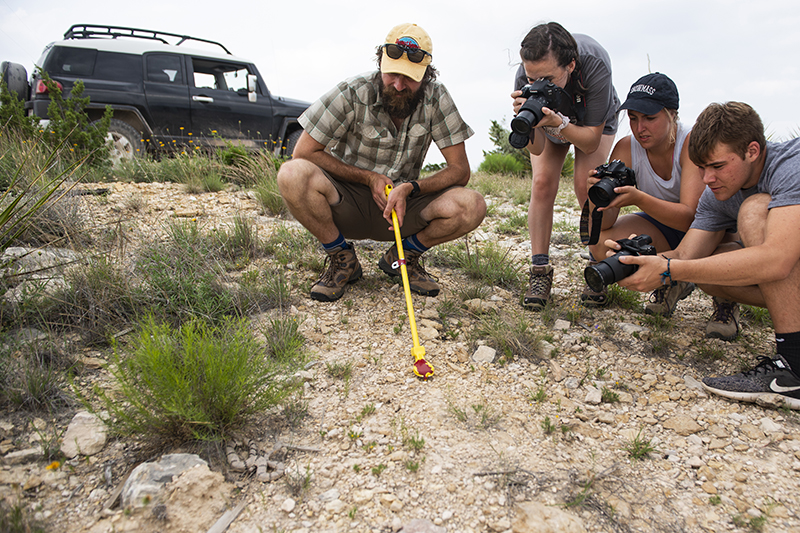
Photo by Justin Rex
OX4: How have your experiences led you to your position at Texas Tech and for that matter, why Texas Tech?
JF: I was first drawn to Texas Tech as a student through my cousin, Brad, who attended a couple years before I did. The university is located in Lubbock, Texas, which is a city of 300,000 people on the southern end of the high plains, where the sky is big, the traffic is light, and the closest metropolitan area is a five-hour drive east. During my time at Tech, I became a photographer and worked intensely establishing an editorial career while I was still a student. Working with Wyman Meinzer as a master’s student helped me in that pursuit, and teaching alongside him helped me land my first job as an instructor in the College of Media & Communication. They needed someone to help re-vamp their photocommunications program and for two years, I was the sole photography instructor in the college aside from Wyman, who taught one class a semester and the Maymester Intersession. Along with teaching, I began working with and being published by some of the biggest magazines in the state. My department chair at the time, Todd Chambers, encouraged me to work on my doctorate, during which I began to write photography books and further hone my teaching.
I loved being a part of the culture in the Department of Journalism & Creative Media Industries at Tech, and so when they advertised a position for a professor of practice, I jumped on it. My role as a professor of practice relies less on traditional academic research and much more on active participation in the industry, all in an effort to immediately bring the professional world into the classroom. I’m still a working photographer, and even more passionate about telling stories about the natural world and being active outdoors. This in turn fuels my interest and excitement to create and teach field-based courses that move students out of the traditional classroom and into real-world, outdoor contexts where they can, like I did, begin fine tuning their storytelling abilities about something, rather than just learn how to push buttons. Now, as the assistant dean of curriculum and instruction in the college, I feel I have an even stronger voice for encouraging other faculty members to do the same.
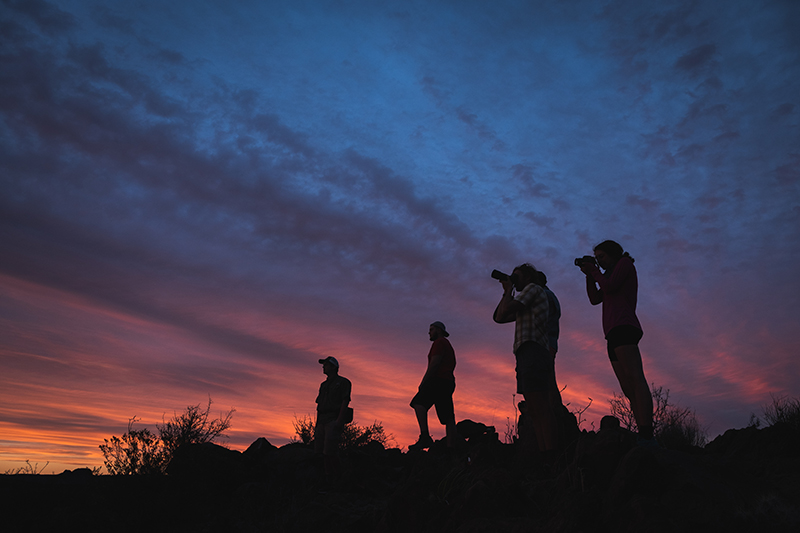
Photo by Jerod Foster
OX4: Was there anyone, or anything, from when you were young that guided and/or influenced your career?
JF: My parents and grandparents were big figures in forming an early affinity for the outdoors. I might not have recognized it at the time, but all that work on the ranch and being part of groups like 4-H and the National FFA Organization helped sew some mighty strong ties to being active outdoors. Singularly, my home, Meadows Ranch, stands as that unique place I believe helped mold my future. I’m lucky to have had such an upbringing in a beautiful part of Texas, where I could walk out my front door and follow wherever the cattle or game trails would take me or bike the gravel roads threading the ranch with my cousin. As rural areas decline in population, I’m constantly reminded of how unique this experience was for a young person, and now that my wife and I have children, we do the best we can pushing them into the outdoors and related experiences.
I’d be remised if I didn’t emphasize how big an influence Wyman Meinzer was on me as a young college student and budding photographer. I was lucky to get to work with him for many years, traveling all over the state and northern Mexico, teaching alongside him, and learning about the business of being a freelancer in a saturated market. I learned a lot about my photography, but also what I could do with it—it’s purpose—from him, and I cannot thank his mentorship enough in where I am now.
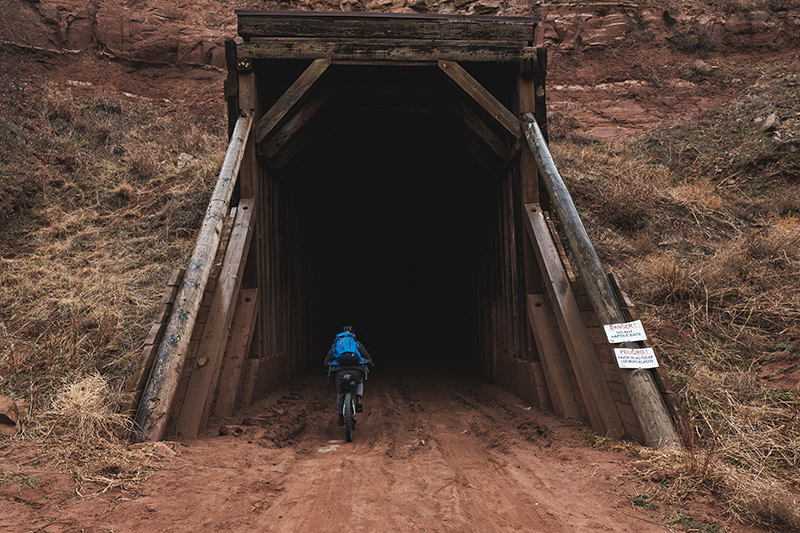
Photo by Jerod Foster
OX4: Tell us about some of the places you’ve traveled to on assignment. Is there one that sticks out as one of the most memorable?
JF: I’m fortunate to have worked in a variety of places around the world, both as a photographer and as a teacher. I don’t know a single photographer who doesn’t realize the camera is a key to learning more about a place, and travel is often high on their lists as part of the occupation. As far as I’ve been, my favorite assignments have always been Texas-based and for The Nature Conservancy. Often, when I’m on a shoot, I’m the only person on their preserves, which range in size from a few hundred acres to 40,000+ acres. I’m especially fond of their West Texas preserves, and I count the Davis Mountains Preserve and Independence Creek preserve as two of my favorite places in the world in which to work. If I had to choose just one especially memorable assignment, though, it would have to be one where I joined Wyman years ago as a videographer in the Maderas del Carmen in Coahuila, Mexico, just east across the Rio Grande from Big Bend National Park. This massive preserve owned by CEMEX occupies some 300,000 acres of pristine Chihuahuan desert ecology rising to points nearly 10,000 feet in elevation and covered in pine trees. We worked hard for a week covering as much ground as we could while documenting key factors of these colliding ecosystems in what can fairly be labeled as pretty harsh country. One particular afternoon, we caravanned ATVs along some rough (and at times, treacherous) double-track up to a 30,000-acre mesa void of trees but covered in the most beautiful native grasses. It was as if a small piece of the richest Great Plains habitat had been set atop this tabletop landscape. After shooting until sunset, we trekked an hour back to our quads and rode the two-hour-long trail back to headquarters in the dark. I was pretty fresh in the industry at the time, but this adventure solidified a great deal of purpose behind the work I sought out afterwards (and still do).
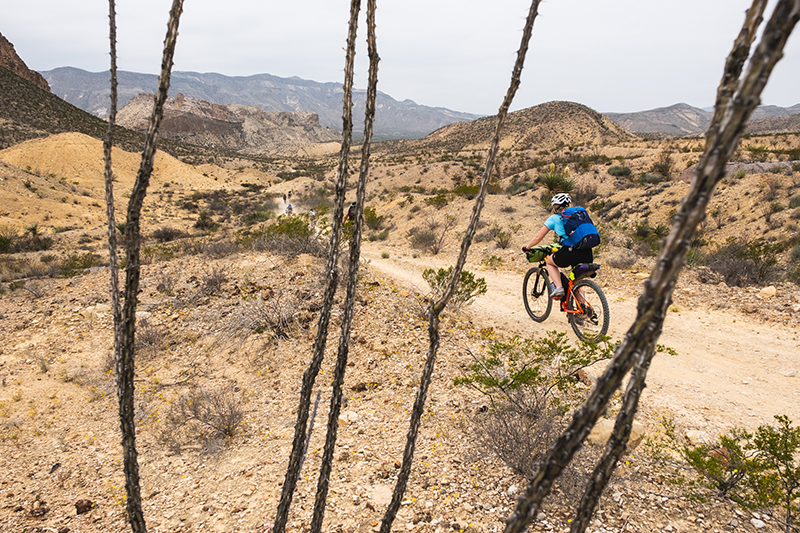
Photo by Jerod Foster
OX4: Is there a place you haven’t yet traveled to, whether in Texas or in the U.S., you’re hoping to visit and write about?
JF: I’m currently obsessed with the Great Plains of North America. I live at the southern end of the high plains portion of this vast region, and although I’ve worked and travelled extensively across the Texas Panhandle and northern New Mexico, I haven’t spent much time elsewhere on the plains, particularly those stretches into Nebraska, the Dakotas, Montana, and into Canada. It’s flyover country for most folks, and yet, it’s one of the most changed landscapes the world has ever seen. At the same time, I believe it’s also one of the most important regions in the world, for the world. I’m so interested in the Great Plains that I am working on a book and documentary about them as seen from the saddle of a gravel bike along a route of dirt, caliche and sandy roads from Lubbock, Texas, to Calgary, Alberta. I’m hoping this slowed movement through the plains will enrich my knowledge and experience in them, as well as direct attention to their value in a variety of ways, adventure travel being but one of them.
OX4: What’s your preferred method of exploration (bicycle, motorcycle, four-wheels, on foot)?
JF: Currently (and for the past several years), the bicycle has been my go-to adventure vehicle. Specifically, I’m quick to grab my Chumba Terlingua gravel bike for both recreational riding and when I’m working on more recent stories and documentary work involving bike travel. On the bike, you move fast enough to cover some significant ground but slow enough to let the places you ride seep in and stop at any moment. The bike is also a pretty disarming vehicle for non-cyclists I meet along the way, and it usually helps welcome conversations with folks along back roads. I enjoy the minimalist approach to bikepacking, and I love pointing the bike down an unknown road. I mountain bike quite a bit, too, and I can’t think of a better way to enjoy the backcountry in Texas and New Mexico, especially when you can easily throw a sleeping bag, bivy, food and water in a couple bags and just go.
That being said, as long as I’m not asked to swim (I’m pretty horrible at it), I’m content with a good hike or exploring in a 4X4. However, my favorite method of getting around is on two wheels. So much so that I’m resurrecting my early experience on motorcycles and about to dive head long in ADV riding for some upcoming projects. Bikes (motorized or not) are such great vehicles for experiencing place, and aside from working off of one, they’re also a great way to involve family in outdoor exploration. My kids are now official bikepackers, and I know we’ll be on bikes as a family for a good long while!
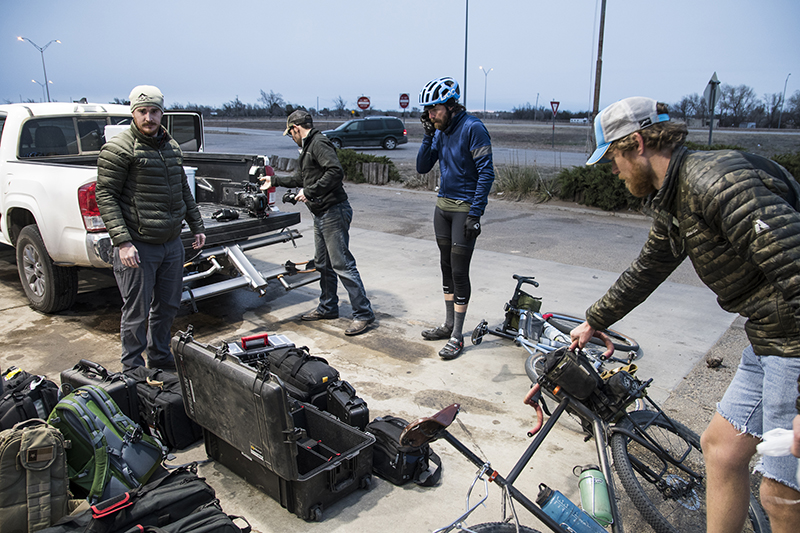
Photo by Justin Rex
OX4: Getting back to Adventure Media, what has been your approach in the classroom, as well as in the field, to interest and engage younger generations into enjoyment and exploration of the natural world?
JF: I’m a big fan of the idea of fighting what Richard Louv calls “nature deficit disorder,” and Adventure Media plays a large role in how my capacity as a field-based professor can aid in that fight.
There are a lot of things that go into making each Adventure Media program a success, but there are a few core principles we ultimately touch on, one of which is the idea that it should facilitate an experience that intensely introduces students to the significance of being outdoors, understanding its natural and cultural values, and realizing one’s own agency in learning more about and advocating for it. These aren’t words we literally say to our students for risk of diluting or over academizing the experience, but the class content and programming is steeped in this ethos. You can’t do this in the traditional classroom contained within four walls on a large university campus. You have to immerse students in a context where the sights, sounds, smells, tastes, and touch points are wholly different, where there’s an alternative method of learning around them at all times, and where there’s a very real risk of physical discomfort and pain and natural stress from which to grow (we have our share of bumps, bruises, scrapes, and crashes; I often joke that it’s the most dangerous class at the university). Rachel Veale, one of my former students, and now an instructor for Outward Bound, recently wrote, “As an outdoor experiential educator, it’s my job to facilitate difficult experiences for students…purposefully place students in settings that push them out of their comfort zone and into the unknown, and we do it for a purpose: to inspire self-growth.” I believe part of this self-growth is finding out for oneself how access to and experience in the natural world is personally transforming. Trisha Nag, for example, had never camped before and her first night on the trail saw the wind chill drop to seven degrees Fahrenheit. What could have been dramatically off-putting in another setting seemed to do the opposite for Trisha, who now is a strong advocate for being active outdoors and wants to connect her expertise as a computer science major to outdoor experiences. She pushed well past her comfort zone and embraced the experience!
We wrap all of this up in a professional trajectory, as well, where research about place and conceptualizing story about it takes place on the front end of the experience, allowing students to not only physically experience the natural setting in a better way, but also help tell its story through a variety of narrative perspectives. I’m interested in going well beyond teaching students how to push buttons and program a camera or software. I’m much more excited to guide students into using their technical skills to learn more about what they are telling stories about and how to craft them in ways that promote the very core sentiments of the natural world that they are also hopefully gleaning during their learning experience.
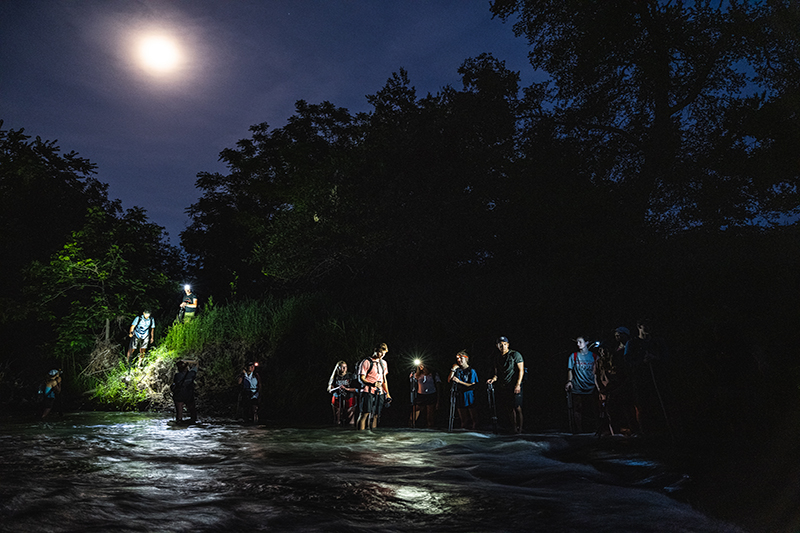
Photo by Jerod Foster
OX4: What are your long-term goals for the program at Texas Tech, and do you expect this program to be a catalyst for this journalistic approach within programs at other schools throughout the U.S.?
JF: My goal every year is to align the class with support from outside organizations that both value this type of education for students and want to be a part of providing them the proper professional experiences necessary to build future leaders in the outdoor recreation and adventure media industry. This often comes in the form of sponsorship, pro deals, and outlets for student publication. This is great for the students because it provides them clients for which their work is both validated and worthy of putting on a resume.
Long term, my goal is to secure a level of support for the class that provides them with not only professional opportunity, but also one that also helps mitigate costs or financial barriers of entry to participate in the program. Although it isn’t near as expensive to take Adventure Media as a study abroad, participation does often mean that students are considering purchasing and investing for the first time in some gear that comes with quite a bit of sticker shock, such as quality, light-weight sleeping bags, camping equipment, and even bikes. For those of us that are frequently immersed in outdoor travel, some of these costs are justified and we’re used to it. However, if you’re a young college student debating between spending $50 on a bottom shelf sleeping bag or a $200+ light-weight, warm bag, and the debate centers around whether or not you need to spend the money you’ll be buying groceries with for the next two months, you’re going to go with the cheaper of the two, despite that it may not be adequate or will hinder your experience in the backcountry. Imagine the first time you were faced with spending your own money on quality gear to participate in a potentially one-off experience. It’s a financial risk some are willing to take, but others are obligated to forego. With gear and equipment support from program partners, more students that need experiences like this in their personal, educational, and professional lives are more able to consider it as a vital part of their career at Texas Tech and beyond. Higher education needs more experiences like this to bolster our students’ readiness post-graduation, and there are creative ways for external partners to be part of that mission.
Ultimately, I would like to see Adventure Media formally join other field courses I teach (such as the 15-day field photography course based at our Junction campus) under a larger umbrella program that signifies the College of Media & Communication at Texas Tech University as the place to attend for a quality, immersive education in the creative outdoor and adventure media industry. This place on the flat plains of the Llano Estacado seems to stand in contrast to the terms outdoor recreation and adventure, but when you’re able to combine a first-rate education with relatively quick access to a variety of field-based learning environments in Texas and nearby New Mexico and Colorado, alongside faculty that fully participate in the industry itself, it becomes a whole other place to call home for several years and build out experiences and portfolio for a career in this type of media. This larger center or institute is still a fresh idea and will take some more consideration to develop it out, but we are starting to lay the groundwork to discuss with supporters and alumni about its direction in higher education and the industry.
And, yes, I believe the class has had an impact on how other institutions are viewing their own efforts in field-based, experiential education. After the 2019 iteration of the course garnered attention through our short film, Terroir, and a couple widely published articles (one of which was with OutdoorX4), I fielded several calls from professors and educators at colleges and universities across the United States, and I even consulted an environmental conservation program in China about how to incorporate some of the philosophies of Adventure Media into their curriculum. I feel fortunate to be able to provide some consult for others as did Kurt Refsnider for me when he was at Prescott College and teaching his Geology by Bikepacking course. I’m excited to see the positive response at the university for this class and others like it. It’s no secret that students want (and need) this type of learning as part of their educational careers, and I’m more than happy to advise others on including it in their own programs!
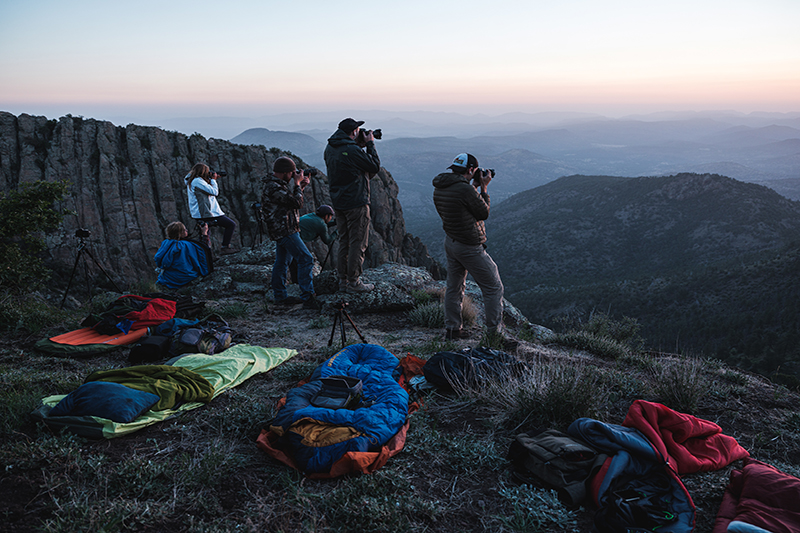
Photo by Jerod Foster
OX4: Any suggestions or tips for those who are new to the great outdoors and how to chronicle their experience(s)?
JF: There’s a bunch! But, I think the most important thing to keep in mind is that experience is greater than gear. Unfortunately, I think the commercial side of the outdoors industry unintentionally makes getting into outdoor recreation and backcountry experiences seem like a relatively intimidating endeavor. The camera industry is the same way to some extent. However, lack of gear should not stop anyone new to outdoor activities and documenting them at a high level of creative and technical quality. I’m a fan of all of the gear, but I learned a long time ago that each piece of backcountry or camera equipment I purchase has to have a purpose and justified use, otherwise, it’s just a waste of money and a hit on my ability to afford the experiences I want in the first place. Especially at first, spend more time than money dipping your toes into the different activities of interest and invest in gear as your skills and interests grow deeper.
When it comes to documenting your outdoor journeys, focus on narrative. It’s one thing to create a lot of instantly likeable images for Instagram, but audiences are story-oriented because story is inherently a human quality that lets us both share and know the world around us. If your intention is to document your experience, you must consider not only your own visual perspective, but what also makes the story more immersive for your audience. Think about capturing wide, establishing visuals to provide a sense of context, tighter shots of action and movement through said environment, and close-ups of textures, colors, and other aesthetics to help fill in the details. I tell my students that if all they create are wide shots of the landscape, they created a gallery rather than a story. The idea is to tell a story with images much like a book author attempts to use the very fundamentals of writing: nouns, verbs and adjectives.
Lastly, participate in these activities regularly. I have a practical outlook on the importance of simply doing. And, the more you prioritize getting outdoors and documenting your experiences and the experiences of others, the better you become at it and the deeper you go with it. On top of that, this allows you to more intensely increase your knowledge on the subject and/or activity you’re interested in, and likewise, the most effective ways of gaining that knowledge. Ultimately, this is what it’s all about. Experience leading to knowledge, making you a better storyteller. If your aspirations are professional, you’re certainly expected to know the technical ends and outs of gear and technique, but telling stories from a place of authority on the subject is what makes you stand apart from the competition. If you’re not interested in seeking professional opportunities, heightened levels of experience outdoors and your chronicling them greatly enriches your time doing such (and your advocacy for involving others).
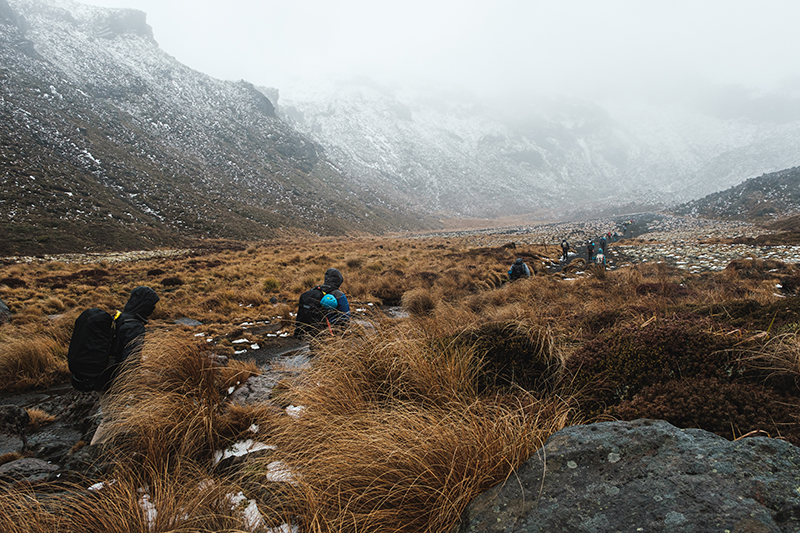
Photo by Jerod Foster
OX4: Where do you see the direction of media heading, and have you had any feedback on this subject from your students?
JF: That’s a big question. An interesting one, too, because there are so many different audiences with their own media consumption preferences and appeals to various forms of storytelling. When it comes to the actual medium, I’m still a believer in print and probably always will be. However, I personally enjoy when a publication has a digital version of their serial issues, as well as a website that hosts more regular content. I know my students certainly gravitate more toward the all-digital ecosystem, but there in lies a conundrum of sorts. I think many print publications are just now coming around to the idea that their print pieces need to also be attractive to younger audiences, as opposed to considering print for their older audiences and their online content for younger ones. Print can totally be attractive to younger audiences, but the actual style of publication and content printed for younger audiences tends to be made for those more intensely involved in their niche of interest(s). Many of these types of print publications are foundationally held up by a strong digital presence and their physical pieces are often published fewer times during the year and are more expensive or membership based.
Content-wise, younger audiences like my students are part of what is popularly known as the “experience economy” and, therefore, are hungry for stories that ultimately paint a picture of what they can do and inspires them into activity. They are less interested in extensive gear talk, but they are most definitely interested in seeing outdoor experiences opened up to a more diverse population. I believe this is especially evident in the mountain biking and backcountry cycling communities where there is a passionate movement toward inclusion within their media, where like much of the outdoor and adventure media is (intentionally or not) aimed more toward a middle-class, white, male audience. Short documentary films are of significant interest to younger audiences, and I believe we are starting to see a shift away from simple first-person journey stories of self-discovery toward those same journeys made to highlight the value of place and culture. This is exciting because in some ways, this is a movement toward the storytelling perspective of print magazines in the 80s and 90s, just in digital and video formats made appealing to a more diverse audience. It’s an interesting time in our type of media, where lines are certainly being blurred, and every story is almost a strategic campaign of making the most of the experience had to produce it in the first place!
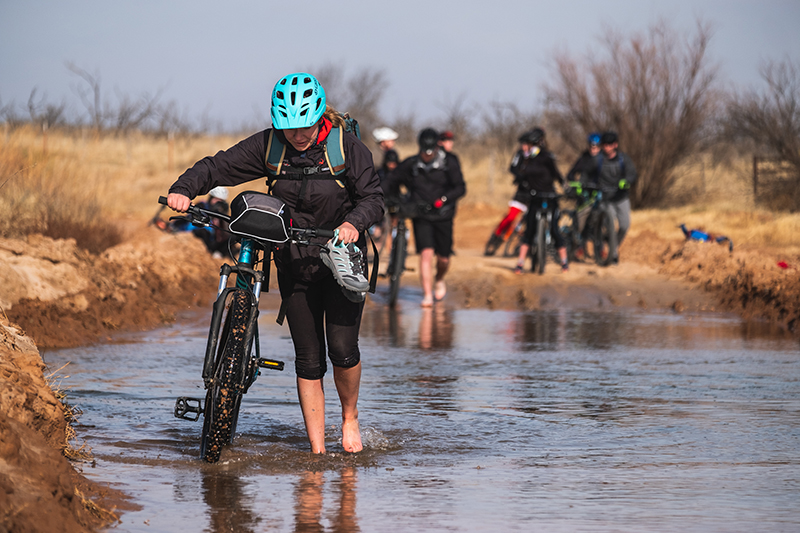
Photo by Jerod Foster
OX4: For those interested in the program at Texas Tech and getting involved, how can they do so?
JF: They can get in touch with me directly, whether they are interested in being a student, partner, sponsor or donor. The Adventure Media program is external-facing, eager to work with industry partners in order to increase the value of the student experience in the classroom. It’s an awesome program with students excited for opportunity to stretch themselves in the outdoor and adventure media world. I love getting to know folks and organizations whose interests are the same and want to see this program thrive!
OX4: Any big plans, both professionally and personally, related to your writing and teaching for 2020?
JF: I’ve been in planning mode for the past couple months on upcoming projects and course programming for 2020. It stands to be an exciting year! Adventure Media will return to Big Bend Ranch State Park again in the Spring, and I’ll take another field-based photography course to our university’s Junction, Texas, campus in May, and another to Scotland and Northern Ireland in July. Professionally, I’m working on several assignments, campaigns and projects that will see me traveling quite a bit over the next year in Texas and surrounding states. One of the stories I’m most excited to be working on revolves around a big adventure motorcycle trip across Texas with my colleague Brandon Weaver. I’m also looking forward to a campaign assignment of sorts that will have me visiting and photographing cattle ranches across the state. Lastly, I’ll be moving forward with a couple film and book projects, one on cycling the Great Plains (as I mentioned earlier) and the other focused on the lesser prairie chicken, a beautiful but dwindling bird species native to the plains region near my home in West Texas. It promises to be an eventful year full of outside time and backcountry exploration!
Editor Note: The Around the Campfire series is brought to you in collaboration with our friends from 67 Designs, proprietors of the finest mounting solutions for your mobile devices whether in the backcountry, around town, and at home. Learn more about 67 Designs by visiting www.67d.com.
OutdoorX4 Magazine – Promoting responsible vehicle-based adventure travel and outdoors adventure


